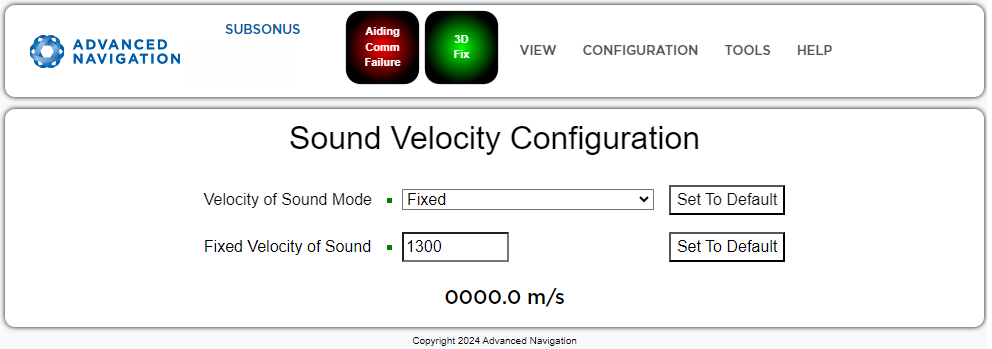Sound Velocity Configuration
The velocity of sound underwater has a strong influence on communications relying on acoustics. The speed of sound in water varies depending on several factors, primarily temperature, pressure (depth), and salinity. Generally, the speed of sound increases with increasing temperature and pressure but decreases with increasing salinity. The difference in sound velocity between two environments could exceed 100 m/s or more. Consequently, propagation of the acoustic signals that are sent and received between Subsonus and other devices are affected by differences in sound velocity.
In environments where the speed of sound varies significantly, such as coastal areas or regions with thermoclines, acoustic signals may experience refraction, scattering, and attenuation, leading to distortion and signal loss. Additionally, differences in sound velocity between device locations can result in mismatches in signal timing, affecting the accuracy and reliability of communication.
To mitigate the challenges, in Internal velocity of sound mode, Subsonus accounts for variations in sound velocity by measuring the time taken for sound to travel between its own hydrophones. The distance between each hydrophone is known to a high precision which allows for an accurate measure of sound velocity.
A user configurable Fixedvelocity of sound mode is also available. This mode is usually for scenarios where the a sound velocity profile has been conducted. Fixed is also the recommended velocity of sound mode when operating outside the normal range of underwater sound velocity.
To configure sound velocity settings, navigate to Configuration → Sound Velocity Configuration in the Subsonus web UI.

Subsonus Web UI - Sound Velocity Configuration Page